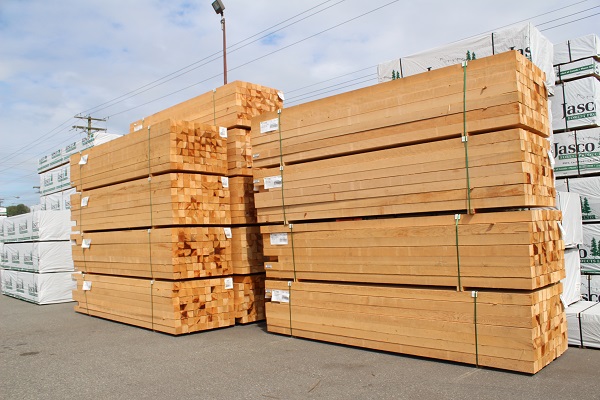In the lush forests of British Columbia, Canada a diverse range of wood species thrives, each contributing its unique qualities to the region’s reputation as a global hub for high-quality wood products. Among this diverse selection, five species stand out for their exceptional strength, durability and aesthetic appeal, playing pivotal roles in the construction, woodworking, interior and industries, shaping structures and designs with finesse.

Western Hemlock
Standing tall along the coastal mountain ranges, Western Hemlock dominates the landscape of British Columbia, with an average height of 30 to 50 meters. Comprising 17.7% of the total volume, and a significant 60% of the coastal volume, it’s even density and excellent machining properties make it ideal for furniture, interior woodworking, doors, mouldings and more. Hemlock turns, planes and shapes well and can be sanded to a smooth finish. It is non-resinous and takes any stains or finishes extremely well. It sands smoothly, glues easily and has a high nail and screw holding ability. This versatile wood finds applications in general construction, roof decking, and plywood, with a notable presence in the Japanese market for glue-laminated beams.
Douglas-fir
Valued worldwide for its extraordinary strength-to-weight ratio, the Douglas Fir is a towering giant that reaches heights of up to 85 meters and is a preferred choice for heavy structural purposes. It excels in applications such as post and beam construction, glue-laminated beams, doors, and general millwork. Douglas Fir’s excellent working properties and dimensional stability make it a top choice for construction projects and furniture manufacturing, both in Canada and globally.
Yellow cedar
Yellow cedar, a slow-growing gem, graces the coastal mountains of British Columbia, taking over 200 years to reach maturity. This fine-textured and straight-grained wood boasts natural resistance to decay and is widely used for shingles, marine pilings, decorative panelling, and even carving. Its exceptional durability and ease of machining make it the perfect choice for applications ranging from furniture to exterior structures, including bridges and decking.
Western red cedar
Western red cedar, one of the most commercially valuable species, thrives along the coast and in the wet belt of British Columbia. Its natural resistance to termite, rot and decay makes it an ideal choice for outdoor applications such as roof shingles, exterior siding, and decking. Its attractive appearance, lightweight nature, and versatility extend to interior uses, including wall panelling and saunas, with the added distinction of being the official tree of the Province of British Columbia.
Spruce-Pine-Fir (SPF)
Engelmann spruce, Lodgepole pine and Subalpine fir come together in the SPF group, showcasing a high strength-to-weight ratio. Primarily used for framing in North American housing, SPF’s dimensional stability and superior glueing properties make it an essential choice for various applications. With a clean appearance and distinct white colour, SPF’s versatility shines in residential, commercial, and industrial construction, as well as in the flat-packed furniture industry.
In the intricate narrative of British Columbia’s wood species, each variety plays a distinctive role, weaving strength, versatility, durability, beauty and functionality into the fabric of construction and design. They meet the discerning demands of Indian customers with their stable lumber, characterized by straight grain, facilitating the creation of warp-free engineered elements. As these woods find their way into structures, furniture and artworks, they stand as testaments to the enduring legacy of craftsmanship and the unparalleled quality that defines British Columbia’s wood industry.
Additionally, to this B.C. Canada is a world leader in sustainable forest management practices. Ensuring their forest are protected and certified. Sustainable forest certification, as rightly described by forest auditors, is as a mechanism to enforce the highest environmental standards within the forestry industry. This comprehensive process involves the monitoring, tracing, and labelling of timber, wood, pulp products, and non-timber forest products. The criteria used to assess is set on agreed-upon standards that encompass environmental, social, and economic perspectives.
Wood certification, such as the Programme for the Endorsement of Forest Certification (PEFC), serves as a crucial mechanism to promote these sustainable forestry practices. In fact, responsibly sourced wood like Canadian Wood originates from British Columbia’s (BC) sustainable forests, which has set the bar high in this regard.
The certifications act as beacons guiding the industry towards responsible and environmental-friendly approaches to wood production as well its multifaceted impact on ecosystem health. It contributes to the maintenance of healthy ecosystems by preventing deforestation, promoting reforestation, and discouraging the use of harmful chemicals.


